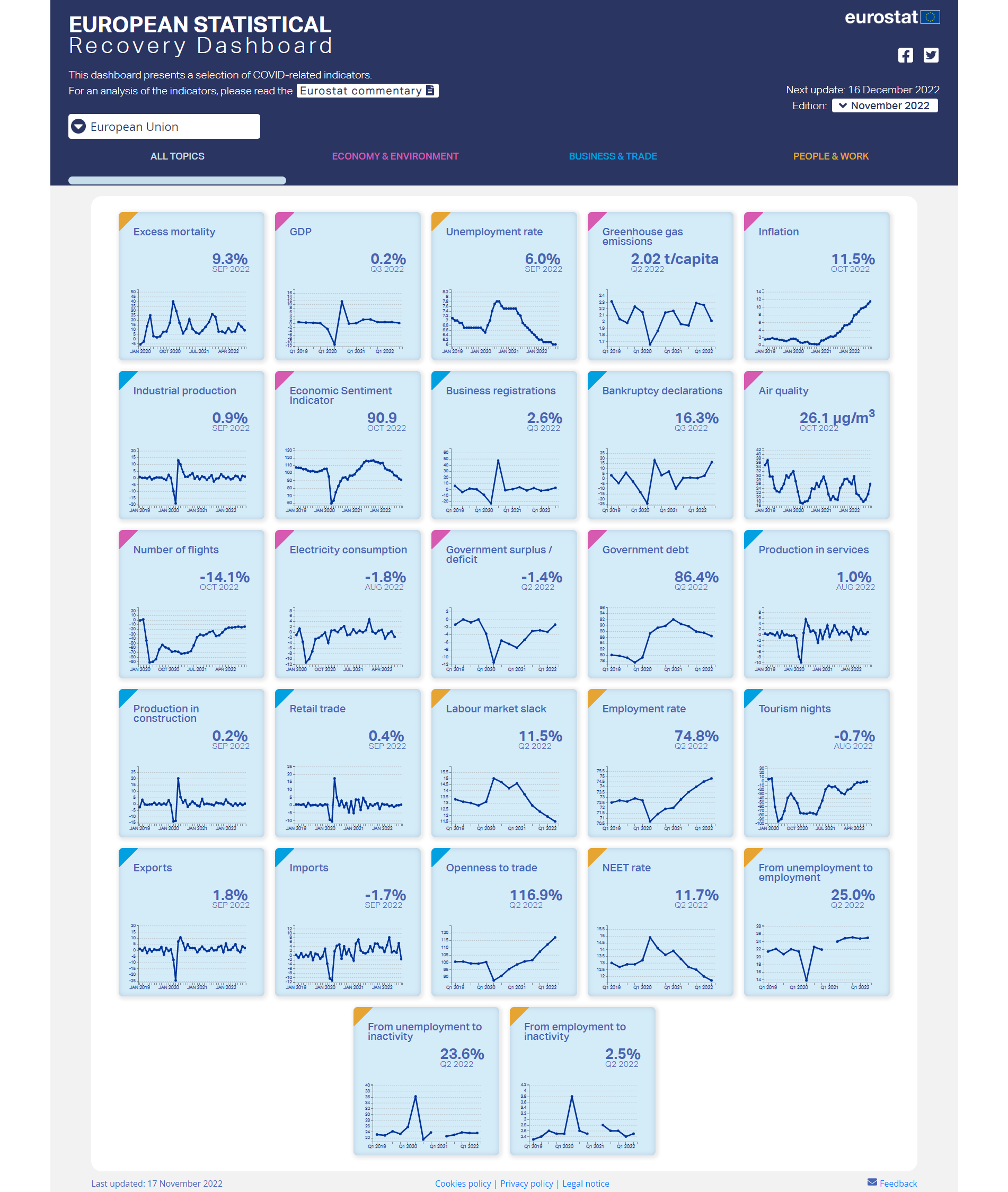Today, Eurostat released the November edition of the interactive European Statistical Recovery Dashboard.
The dashboard contains monthly and quarterly indicators from a number of statistical areas relevant for tracking the economic and social recovery from the COVID-19 pandemic, across countries and time.
November highlights: EU economy continues to grow moderately, remaining vulnerable to shocks in commodity markets, while excess mortality declines
The EU economy continued to grow in Q3 2022, but at a slower pace compared to the previous quarter. EU industrial production, production in construction and retail trade rose in September 2022, while EU production in services rose in August. GDP, industrial production, production in services and retail trade remained above their pre-pandemic levels, while production in construction was slightly below.
At the same time, the EU economy remained vulnerable to shocks in commodity markets caused by the Russian war of aggression against Ukraine. Inflation reached a new record high level in October 2022, driven mainly by high energy and food prices. This is reflected in EU economic sentiment, which continued to decrease in October 2022, dropping further below its pre-pandemic level.
Furthermore, bankruptcy declarations in the EU rose sharply in Q3 2022, although remaining below pre-pandemic levels.
As regards the EU labour market and mortality, in September 2022 the unemployment rate was stable, remaining below its pre-pandemic level, while the excess mortality rate continued to decrease, after a peak in July.
You can read the full analysis by clicking “Eurostat commentary” on the dashboard’s header. The dashboard is updated every month with the latest available data for each indicator.
The line charts in the dashboard offer many functionalities to easily explore and analyse the development of the indicators, such as displaying a longer time series, comparing several countries, downloading the customised chart or the source dataset.
For more information, you can also visit our website section dedicated to COVID-19, bringing together in one place a wide range of statistics and data published by Eurostat.
To contact us, please visit our User Support page.
For press queries, please contact our Media Support.

